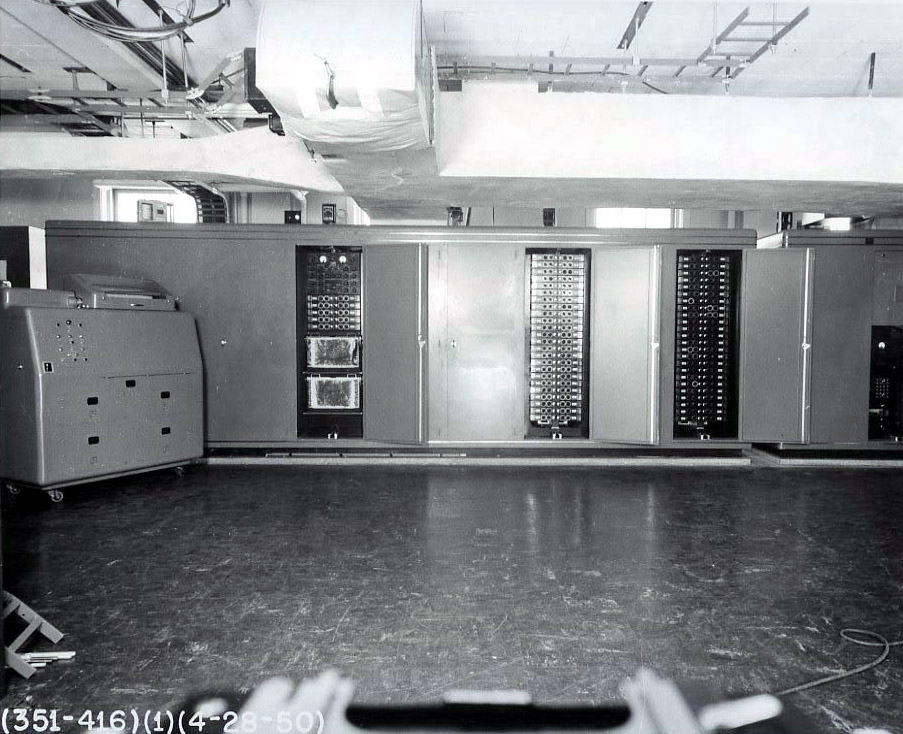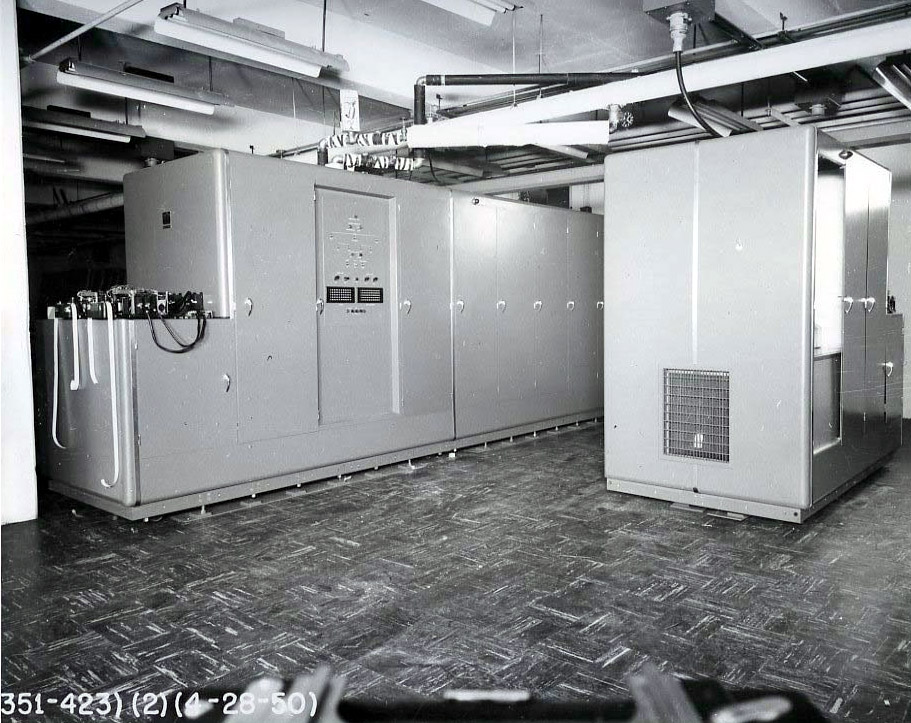| The DEMON computer was one of the follow-on machines. It was built
to crack a specific Soviet code. In 1949 the code was changed thus rendering
the machine useless.
James Pendergrass, a Navy officer attached to the codebreaking unit,
had attended a series of lectures at the Moore School of Engineering at
the University of Pennsylvania in 1946, and became convinced the only lasting
solution to the code breaking problem was a computer that could be quickly
re-programmed to work on different tasks. In 1947 the Navy awarded ERA
a contract called , "Task 13". It was to develop what was destined to be
the first stored program computer. The machine, known as the Atlas, used
a drum memory and was delivered in 1950. ERA then started to sell it commercially
as the ERA 1101, 1101 being binary for 13. Even before delivery of the
Atlas, the Navy asked for a more powerful machine using both Williams tubes
and drum memory, a machine known as the Atlas II. Work began in 1950 and
the completed Atlas II was delivered to the still-secret NSA in September
1953. (NSA photo) |

